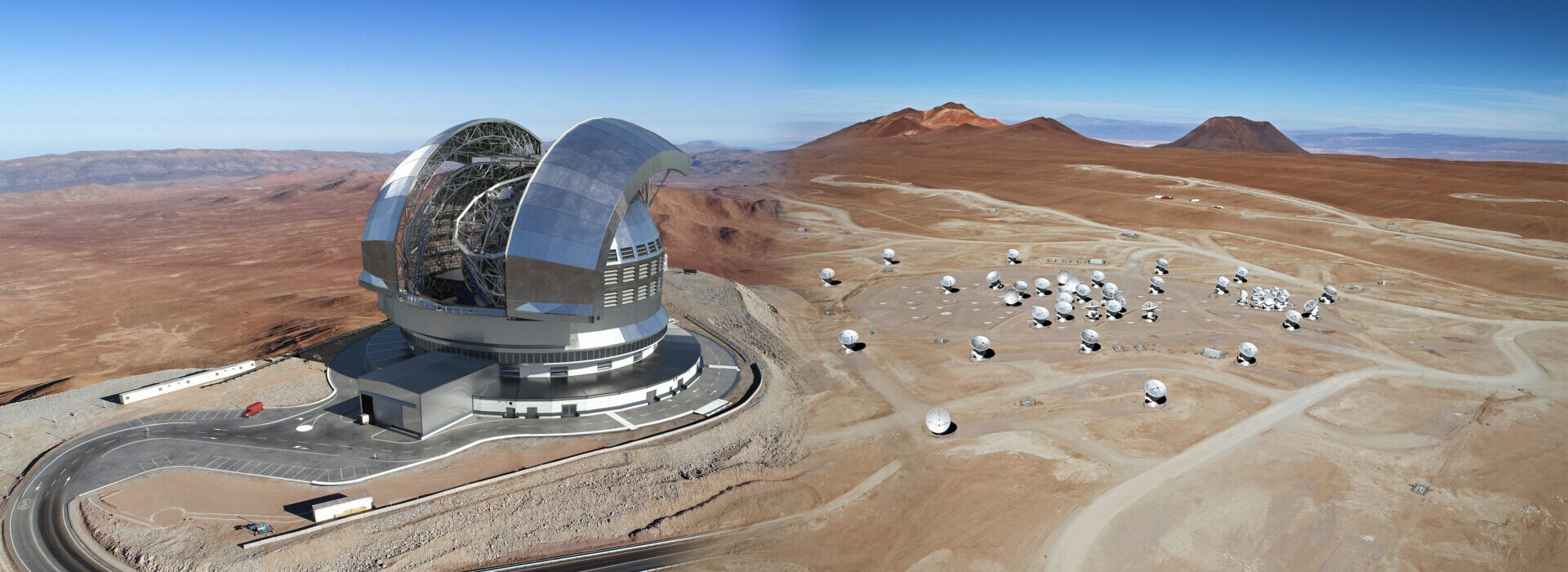Paranal and ALMA will increase their astronomical data transmission capacity tenfold
Following an agreement awarded to the Red Universitaria Nacional (REUNA), ESO’s Paranal Observatory and ALMA will expand their global data transmission networks. The new network capacity, which runs through the Atacama Desert along the coast and mountain range of the Antofagasta region, respectively, will cover the future needs of both astronomical centers.
This agreement signed between ESO, ALMA and REUNA will increase the current capacity of the transmission system tenfold. This will continue to provide adequate connectivity to ESO’s state-of-the-art telescopes such as the Very Large Telescope and the future Extremely Large Telescope, the world’s largest optical infrared telescope, which is currently under construction.
“ESO and REUNA joined forces with the European Commission (EC) to bring the very first high-bandwidth fiber optic connection to observatories in northern Chile, thanks to EVALSO. Today we are building on that capacity, as we open the doors to other important international and national projects in the next decade with this significant concrete contribution to astronomical research in Chile,” says Andrés Vinet, Head of IT Group Chile for ESO.
For the ALMA Observatory, which is in the process of upgrading its technology for the year 2030, this will mean that it can transmit its data to its regional centers located on three continents through its new powerful capabilities.
“ALMA is undergoing a profound upgrade as part of its 2030 plan. These improvements will keep the observatory at the cutting edge of science and will require adaptations to almost all of its components. These include an increase in data transmission capacity from the Chajnantor Plateau to the various data centers operated by our partners in Europe, North America and East Asia,” says Jorge Ibsen, ALMA’s Head of Engineering.
The agreement with REUNA will run through 2034 and will increase from the current 10 Gbps to 100 Gbps. It will also give continuity to the network that REUNA has been providing since 2010. “This technological leap will enable us to anticipate the complex requirements of the different astronomical projects, not only from a scientific point of view, but it will also generate the conditions for its remote operation in real time, all in a matter of minutes—if not seconds—by facilitating the transmission of data from the north of Chile to wherever they are required, anywhere in the world,” says Albert Astudillo, REUNA’s Chief Technology Officer.
Additional information
ALMA is a partnership of ESO (representing its member states), NSF (USA) and NINS (Japan), together with NRC (Canada), NSTC and ASIAA (Taiwan), and KASI (Republic of Korea), in cooperation with the Republic of Chile. The Joint ALMA Observatory is operated by ESO, AUI/NRAO and NAOJ.
Contacts
-
Nicolás Lira
Education and Public Outreach OfficerJoint ALMA Observatory, Santiago - ChilePhone: +56 2 2467 6519Cel: +56 9 9445 7726Email: [email protected]

